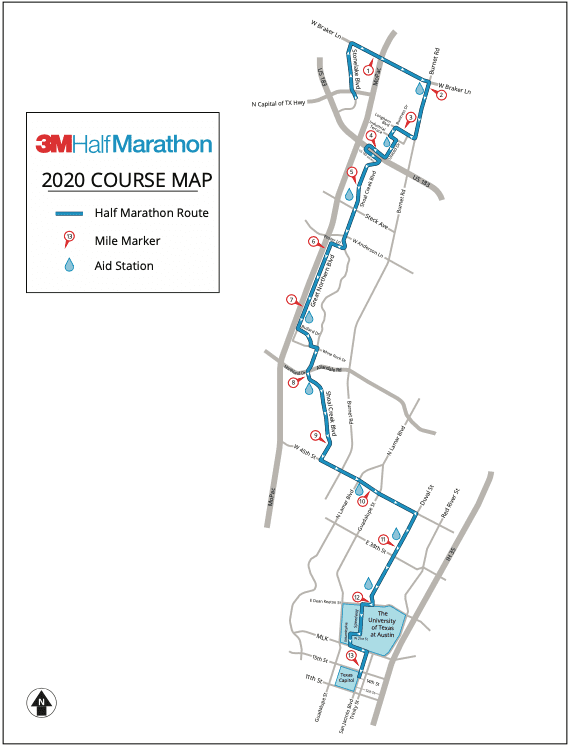3M Half Marathon is one of the fastest point-to-point courses
Courses come in many different flavors: loops, out-and-back, and even lollipops. A favorite flavor amongst many runners is the point-to-point course. Unlike most courses, point-to-points don’t finish where they started. The logistical challenge of getting athletes back to the start after the race makes them rare, but for the runner, there are many things to love.
The 3M Half Marathon presented by Under Armour is one of the most popular point-to-point runs in the country. Dubbed “Downhill to Downtown,” it boasts one of the fastest 13.1-mile courses in the country. Starting in North Austin, the course takes athletes on an unforgettable tour of Austin. The finish line is right on the edge of The University of Texas near the Texas State Capitol within walking distance of downtown Austin.
300 ft. net elevation drop
Most courses start and finish in the same location so any elevation drop you enjoy will have to be made up for with an uphill. 3M Half Marathon participants can take advantage of a net elevation drop of almost 300 feet. There’s enough climbing to keep you honest, but the inclusion of several long, steady downhills gives a well-trained runner the opportunity to crush their personal best. And, let’s face it, there is a certain thrill in running 13.1 miles and actually getting somewhere as opposed to just finishing where you started. Pro tip – incorporate these downhill running tips to save your legs!
When asked to list their favorite thing about the 3M Half Marathon most runners immediately mention the world-famous 3M swag bag. But coming in a close second is the amazing course.
A survey of some of our running friends yielded these opinions of point-to-point racing and the 3M Half Marathon:
- I like any course that doesn’t take you within the line of sight of the finish line until you are actually finishing. – Holly
- I loved the run down Shoal Creek. It was a beautiful winding street with lots of spectators. Gave me that extra wind to finish. – Melanie
- It’s fun to finish somewhere different than you started and know that there’s little to no overlap. – Iram
There are many reasons to love a point-to-point course. What makes 3M Half Marathon a favorite is the net elevation drop and finish near downtown Austin. Is there a specific reason you love 3M Half Marathon’s point-to-point course? Let us know on Facebook or Twitter.


